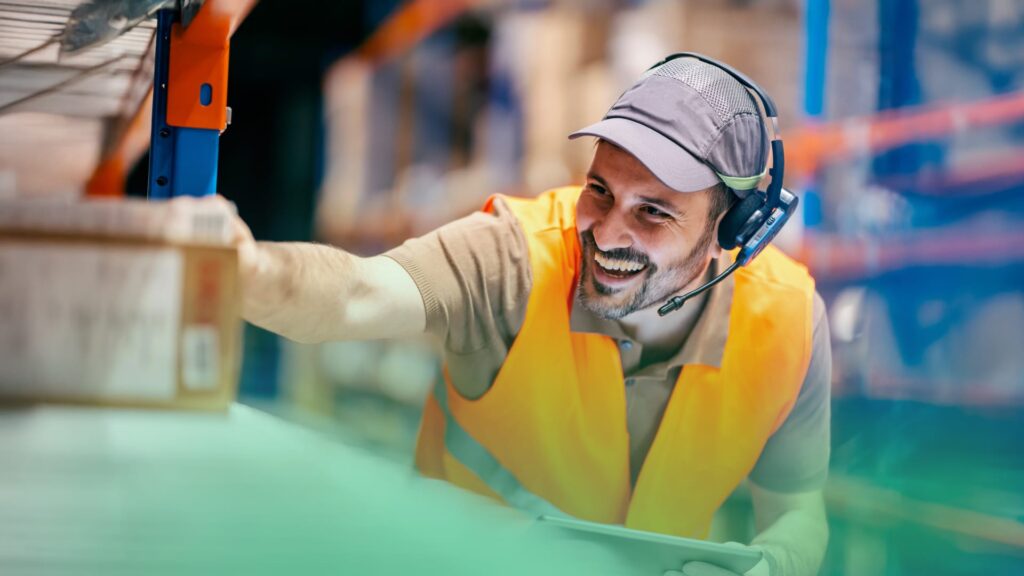One of the biggest hurdles you’ll have to jump when it comes to your subscription box business is shipping. That’s because today’s customers expect not just a positive buying experience but also a positive unboxing experience. So the appearance of your box—first on the outside, then what’s on the inside—is even of greater importance because it’s part of your brand. You need each and every package to be visually appealing and for the packing materials to be pleasing to the eye.
Another factor is that packaging itself prompts a subliminal response from your buyer. Poor—or even just plain—packaging can make your customer first belittle the box itself and then, by association, discount the value of what’s inside the box. And that unconscious reaction is the worst because if you ask, the customer can’t tell you precisely what’s the problem!
Appealing filler material is easy. Choosing just the right box takes more thought. Your customer must feel that the box or packaging is sturdy enough to protect what’s inside. If not, then you risk either a return for replacement with the comment, “It was damaged in shipping,” or worse, you lose the sale altogether.
The good news is there are ways to successfully jump that positive unboxing experience hurdle. It just takes a little research and putting yourself in your customer’s shoes—more accurately their eyes—to keep them content and coming back for more.
But enough of this track and field unboxing hurdle metaphor stuff. Let’s get down to the nitty-gritty of how you can choose the perfect packaging for your stuff by asking and answering some questions regarding choosing the right package for your particular subscription box business.
Decision #1: Choosing the Best Box Size for Your Subscription Business
When you’re just starting out, every penny counts because you’ve got really tight margins and you need capital to purchase items for next month’s box. If you can make your subscription box a size that needs less handling, you’ll save money. One subscription box company we read about got their box to fit in a standard mailbox simply by reducing the size of their box by only 2 centimeters! Just doing that saved them a bundle up front and over time, those 2 little centimeters translated into serious cash.
But you don’t have to be able to stuff your box into a mailbox to save big bucks. You just need to figure out the answer to some specific questions.
- What exactly will I put in my subscription box?
Once you get this nailed down, you’re all set because you’re not going to alter your box size every month. You only need to decide one time which box size will accommodate your product without limiting your options.
What you want to do first is focus on two types of items: The largest items and the most fragile items. Bigger products naturally take up more space, but fragile things will too, depending on how much cushioning they’ll need to guarantee they’re protected. When forecasting what you’re going to include in your box, you may have to mix and match items to ensure everything will fit.
This first question, believe it or not, is actually relatively easy to answer as compared to this next one:
- How can I make the box big enough but not too big?
This is the trickiest part of subscription box shipping, so let’s go back to that positive unboxing experience hurdle. One of the things people don’t realize they value is the feeling of fullness that a package has. You need your customer to pick up your box and think, “There’s stuff in here.” Packing material will keep your items from shifting around during shipping and give your box the illusion that it’s stuffed full, but packing material can only go so far. You want to try to avoid the bag of chips effect where there is more air than actual product.
And yep, that “bag of chips effect” is exactly what you’re thinking—like a bag of potato chips with way more air than chips. In this case, packing material is “air.” However, the appearance of that air is wildly important to your customer’s unconscious response, so let’s talk about that for a minute.
Two of the most common types of packing material are crinkle cut paper and tissue paper. What’s great about these is that you can get them in various colors to align with your brand.
- How do I choose the type of box I want?
Ask your printer to provide samples of the different standard box sizes. Then play with those samples, packing and unpacking your items, and also trying out different packing materials. Then you can see for yourself what will and will not work. (We humans are horrible estimators, so don’t even think of trying to guesstimate the right size without experimenting!)
Once you have those samples in hand and know a couple of sizes that might work, go back to looking through your customer’s’ eyes. The uniqueness of the box the product comes in is another key to creating that positive unboxing experience, so ask about custom boxes. If your printer offers this service, ask to see samples of the most common sizes the printer makes for other companies that either sell a product similar to yours, or sell items of a similar size. You just might get a really good deal by creating a custom box that uses the printer’s stock dies, while creating your own original design for the outside (and inside) of the box.
Pro Tip: Ask yourself, “Do I even need to ship my items in a box?”
Although we’re biased and love the impact of a custom box, take a look at how you want to present your brand. There are lots of other options out there that might be a better fit for your products. Here are some examples:
Poly mailer
Poly mailers are very lightweight, extremely cheap, and take up less space than square or rectangular boxes. They’re perfect for non-fragile items like clothing, books, or just about anything else that’s small and unbreakable. They work really well if you’re planning to use USPS First Class Package shipping.
Rigid mailer
These are ideal for documents, art prints, photos, other flat products and also for product samples.
Bubble mailer
These are a great choice if you can ship at a flat rate, and the bubble lining provides a little extra protection to the contents.
Decision #2: Deciding how durable your subscription box needs to be
Going back to the problem that, if the customer questions, even for a moment, the safety of the product they ordered because they think—either consciously or subliminally—that the packaging wasn’t protective enough, you’ve potentially lost repeat business. But not to worry. There are several things you can do to short circuit even that pesky subliminal message trigger. Here are a few:
Choose a box slightly thicker fluting
While researching boxes, you may have come across the work “fluted” or heard “flute size.” Flute size is a measure of the thickness of the cardboard. (For a simple visual, flute size is the depth of the zigzag paper that’s in between the two outer solid sheets of any piece of cardboard. You can see the fluting when you cut a piece of cardboard in half.) Most boxes come in a standard 1/16 e-flute size, but if you plan on shipping heavier products, ask your box supplier about using 1/8 b-flute, which is more resistant against crushing and puncturing.
Put your box in a protective poly bag
This is a common thing to do if you’re shipping white or light boxes. You may not need to worry about your box being damaged, but smudges and grime are a real turnoff for customers. If you want to go one more extra mile, find out what it would cost to have custom poly bags produced with your branding!
Use an outer shipping box
Similar to the poly bag idea, you can take an extra step, create an outer shipping box, and then use your subscription box as an inner box. Yes, this costs more but it gives you more protection, and you’ve pretty much guaranteed your customer a high-end unboxing experience.
Always use packing material
Not only is this great for presentation purposes, but the stuffing ensures that your items won’t shift around during shipping. You might not think about it, but not only can the items become damaged, but the shifting product can also damage the inside of the box. Also, most subscription boxes have branding and printing on the inside, so you want to guarantee that’s protected.
Decision #3: How will different box sizes affect shipping prices?
When it comes to shipping your boxes, you’ll need to spend ample time comparing the various shipping options. There are three leading options when it comes to choosing which carrier best suits your box.
USPS
USPS cubic shipping is the most popular shipping method for subscription boxes—especially subscription boxes just starting out—because it’s the most cost-effective. The reason being is that cubic pricing is based on volume and not the weight of the box.
The formula to calculate cubic rate is: Length x Width x Height / 1728 = Cubic Rate
The major downside to USPS is their lack of reliability that you get. The two biggest complaints that we hear with USPS is that they do not guarantee the delivery date and the tracking information didn’t update. Even worse, sometimes USPS tracking says delivered when in fact it wasn’t. There are other times when the tracking is only updated when the package is delivered, which is completely useless.
Just because USPS cubic pricing is the most common, that doesn’t mean it’s always the best option.
DHL
If your box is lighter than one pound, DHL eCommerce Lightweight is a great alternative that can save you money on shipping. You’ll have the option to choose between expedited (2-5 average transit days) or ground (3-8 average transit days) service levels. Choosing ground service will save you anywhere from 3-5 cents per box. Also, DHL eCommerce’s international rates are a lot cheaper that USPS First Class Mail, so we would recommend them.
The downside is that their retail rates are near-astronomical, but with a reasonable amount of negotiation skills (or taking advantage of their resellers like ShipMonk), you can get some pretty decent discounts.
Pro Tip: When shipping with Internationally with DHL be sure to factor in volumetric (or dimensional) weight. With volumetric weight, you’re basically calculating the amount of space your package is using versus the actual weight. Carriers began using volumetric weight to make the most out of lightweight items that occupy more space. Read more about volumetric weight.
FedEx SmartPost + UPS SurePost
If your box weighs more than a pound or is large and light, either SmartPost or UPS SurePost will be probably your cheapest and best bet. It may take a while for the box to get to your customer, but with subscription boxes, you’ll be able to factor in the longer shipping times while planning your fulfillment timeline. We always recommend utilizing delayed tracking numbers, so your customer receives the tracking information only a couple days before their box is delivered. This way you create the illusion that the shipping method you opted for is fast and reliable.
Besides a higher level of customer service, both FedEx and UPS’s services are “guaranteed,” meaning if you ship the box overnight, and the box doesn’t get there, you get your money back. It’s a great option to have when you’re under the gun and need to get boxes to customers fast.
While conducting research on the various shipping options, you’ll likely come across a variety of fulfillment centers who can offer eCommerce companies heavily discounted shipping rates. If you’re interested in leveraging the shipping volume of a fulfillment center like ShipMonk, please contact us to see how much you can save. We’d be more than happy to discuss your shipping strategy and provide you with an action plan to help you grow your business to next level.





